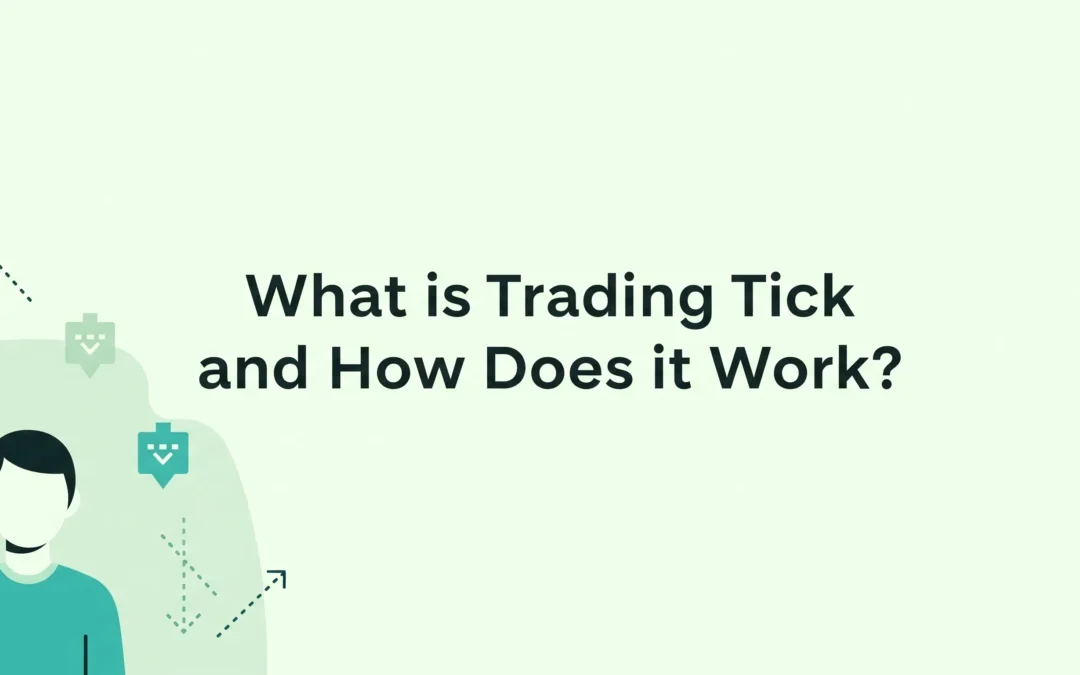Traders know the importance of “second” in trading. The market can change within seconds, let alone minutes. Tick represents the smallest change in price of assets between trades, which occurs every time a trade is executed not necessarily every second. Some investors confuse it with a term associated with time, which is wrong. Trading tick is crucial as it provides precision to real-time data and makes it more dependable.
This article will provide information regarding trading ticks and how they actually work. It will also give insights into the pros and cons attached to it.
What is a Trading Tick?
The smallest possible increase or decrease in a security’s price is referred to as a trading tick. It shows the little change in the asset’s price between two consecutive trades.
The tick size for the majority of equity stocks on Indian stock exchanges, such as the National Stock Exchange (NSE) and Bombay Stock Exchange (BSE), is 0.05. It might be different for derivatives and other financial instruments, though.
Key Features:
- A tick represents a slight change in price rather than a measure of time.
- Every tick indicates a shift in the transaction price, either upward or downward.
- The exchange determines tick size, which can differ depending on the asset class.
Understanding the Pros and Cons of Trading Tick:
Let us look at the usefulness of tick in trading along with the cons associated with it:
Pros:
- Real-Time Market Insight Ticks give traders access to real-time price movement data, enabling them to act quickly on momentum.
- By monitoring minute price changes, traders can enter or exit trades with little price difference due to precision.
- When developing and implementing algorithmic strategies that profit from even the smallest movements, ticks are crucial.
- In order to execute numerous trades in a matter of seconds and make tiny profits, scalpers rely on tick-level data.
- By observing how frequently trades occur and how quickly prices move, traders can better evaluate liquidity.
Cons:
- For new traders, it can be confusing and overwhelming at the start, and they might mistakenly interpret variations as patterns.
- Retail investors frequently lack the high-technology systems and good internet required by traders to use tick data efficiently.
- Ticks don’t always reflect the overall order book or market sentiment; they only display the most recent trade.
- Traders may be tempted to make rash decisions by tick watching, which could result in higher transaction costs and possible losses.
- It may not be useful for long-term investors.
How Does a Trading Tick Work?
Let us look at how a trading tick works:
1. Price discovery and tick movement
Price discovery, the process by which buyers and sellers agree on a fair price, is affected by even the smallest variation in this price from one transaction to the next. This is indicated by the tick. For example:
Assume that the price of a stock is ₹150.00 at the moment. The following prices, with a tick size of 0.05, could be Rs. 149.95 or Rs. 150.05. Buying or selling in huge quantities will affect the profits significantly.
2. Ticks’ Function in Order Execution
The tick size dictates how precisely you can regulate your price entry or exit when placing a limit order or market order. For instance:
| Order Type | Case | Execution Price Based on Tick |
| Limit Buy | You want to buy at ₹250 | You can only set orders like ₹250, ₹249.95, ₹249.90 (not ₹249.93) |
| Limit Sell | You want to sell at ₹300 | You can set prices like ₹300, ₹300.05, ₹300.10, etc. |
3. Comparing Time-Based and Tick Charts
Tick charts are used in place of time-based charts in short-term trading. Instead of using time, a tick chart plots price changes according to the quantity of transactions. As an illustration:
- Regardless of time, a 100-tick chart will plot a bar every 100 trades.
- New bars form more quickly in a highly active market.
- Tick bars are less frequent and appear more slowly in a slow market.
This is especially helpful during times of high volatility because it helps traders concentrate on activity rather than time.
4. Strategic Application
- Scalping: Market scalpers may enter dozens of trades daily while aiming for only two to three ticks of profit per trade.
- Order Book Analysis: You can determine whether buyers or sellers are in control by looking at the frequency and direction of ticks.
- Stop-Loss/Target Setting: In intraday strategies, ticks are also utilized to set precise stop-losses or targets.
Bottomline
The conclusion can be drawn that ticks play an important role in price discovery and order execution. It is an essential component that requires understanding for profit-making. Many traders may use this to generate huge profits between buying and selling points, even with a minor difference. However, it may not be suitable for long-term investors as they focus more on other factors like industry growth potential, etc.
New investors should focus on learning such minute terms before entering to trade to avoid losing their hard-earned money.


